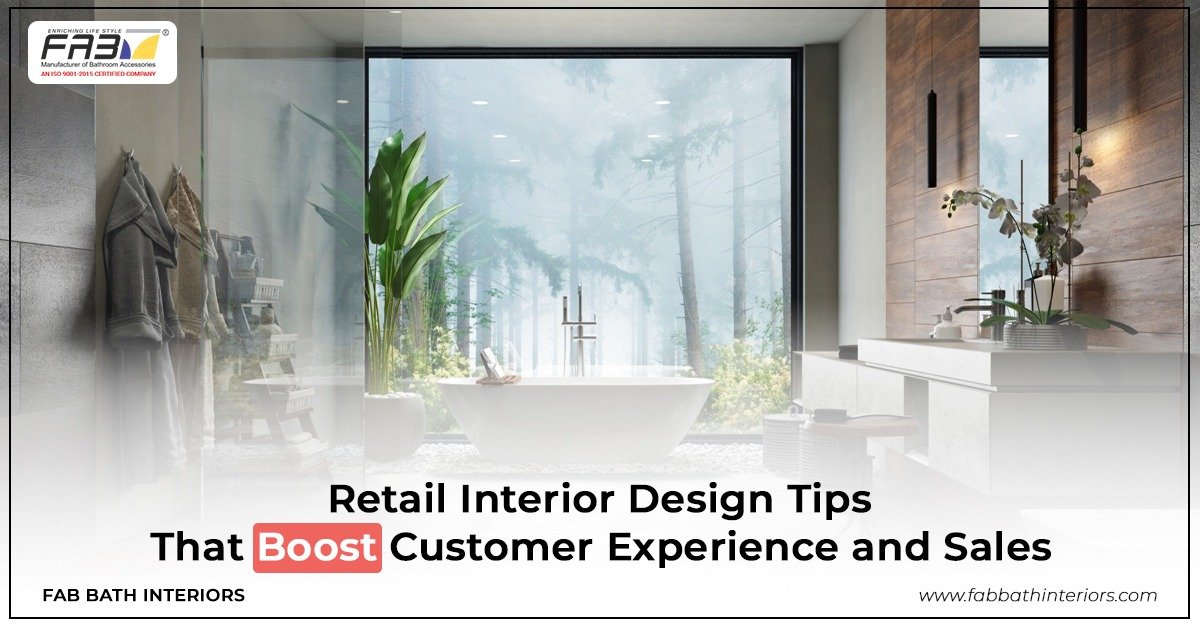Retail isn’t just about selling products anymore—it’s about selling experiences. Consumers now expect nothing besides full shelves; they want to have fun wherever they shop. As a result, well-designed retail interior design tips are necessary for brands that seek to drive foot traffic and sales conversion. The proper layout can impact emotion, shopping behavior, and even loyalty.
This guide outlines expert retail store interior design strategies that help retailers attract, engage, and convert customers faster and more effectively.
Why Retail Interior Design Tips are Important in Today’s Market?
Good design isn’t all about appearance—it’s all about strategy. Placement, lighting, texture, and fixture choices can make or break a consumer’s feelings about a space. According to several retail studies, over 60% of purchasing decisions are made at the point of sale. That leaves the right atmosphere directly affecting whether a consumer makes a purchase.
Interior design must communicate your brand values and enable the customer experience in retail. To develop an irreparable experience, each segment must function as a single unit from the entrance to the cash register.
1. Design Zones to Guide Customer Traffic
Dividing your store into various zones is one of the most successful retail interior design strategies. Zoning can control traffic and allow consumers to walk naturally through the area.
- Utilize shelving or display to steer traffic quietly.
- Position top-selling or promotional products at visual points of the store.
- Include casual pause points such as seating or interactive product displays.
Designing for flow ensures customers explore the whole store, not just the entrance.
2. Utilize Lighting to Create Atmosphere and Direct Attention
Lighting can be a powerful tool in visual merchandising interiors. It can emphasize major products, create mood, and add energy to the store’s atmosphere.
- Employ warm light within the lounge or luxury areas to invite lingering.
- Focused, high-intensity lighting is best for emphasis creation on given products.
- Accent lighting draws attention to promotion spaces.
Collaboration with design specialists such as Fabbath Interiors ensures lighting solutions aid both brand and sales objectives.
3. Make the Most of Display Flexibility Across Multiple Campaigns
Retail is ever-changing. Seasonal collections, flash sales, and new launches require a responsive layout.
- Invest in modular shelving, mobile display units, and wall-mount units that are quick to reconfigure.
- Modular displays enable you to reimagine the layout without calling the builders.
- Cluster products by theme, colour, or use for maximum impact.
- Place hero products at eye level to maximize visibility.
Flexible designs coupled with other retail interior design tips save redesign costs and enable more impactful visual storytelling.
4. High-Quality Functional Fixtures and Finishes Matter
The quality of fixtures and hardware that customers see reflects the brand’s image as a whole. Luxe finishes add a measure of professionalism and longevity, particularly in areas with frequent use, such as heavy-trafficked areas.
Fabbath Interiors is proud to have an extensively researched selection of high-quality items, including:
- Bathroom accessories are for in-store customers or bathroom use.
- Mortise Handles that balance design with endurance.
- Lock Systems for added security in clean designs.
These elements add not only to aesthetics but to long-term performance and reliability.
5. Design With the Buyer in Mind
Buyer psychology is the key to excellent retail store interior design. Colours and texture can impact the time customers spend and what they purchase.
- Utilize soothing colours in health or clothing departments.
- Include textured surfaces for touch interaction.
- Design checkout areas to be seamless and not frustrating.
Intellectual and tailored design improves retail customer experience, ultimately driving loyalty and sales.
6. Emotionally Connect Through Brand Storytelling
Customers don’t just buy products—they buy stories. Use your space to tell the story of your brand, mission, and values.
- Use signage and display to reveal hidden stories.
- Highlight fair manufacturing, craftsmanship, or neighbourhood inspiration.
- Interlace product display with lifestyle components.
The method of storytelling makes customers feel pampered by the brand and entails repeat business.
Conclusion
Strategic design is not an extravagance—it translates into high-ROI Companies wishing to increase showroom sales with design must focus on creating interactive, functional, and emotionally engaging retail environments. By following these successful retail interior design strategies, brands can transform their stores into successful sales machines.
By working with seasoned partners such as Fabbath Interiors and following practical retail interior design tips, businesses benefit from customized solutions for everything from floor plan layouts to upscale hardware. The outcome? Retail spaces do more than just display—they sell.
FAQs
- What is an ideal interior design for a retail store?
A well-designed retail interior should optimise spaces for users, and permanent fixtures and fittings should decorate the structure.
- How do you design the interiors of a retail store?
While selecting the interior design of the retail space, ensure it aligns with the brand identity, maximises customer experience, and optimally utilised the space.
- Why are fixtures important in visual merchandising?
Retail is all about luring buyers with the product’s looks and appeal. Strategically, appropriate lighting and fixtures and fittings impact customer behavior.
- What assures that your retail interior design has been successful?
If your customers find the interior design functional and practical, it guarantees the success of space design.



